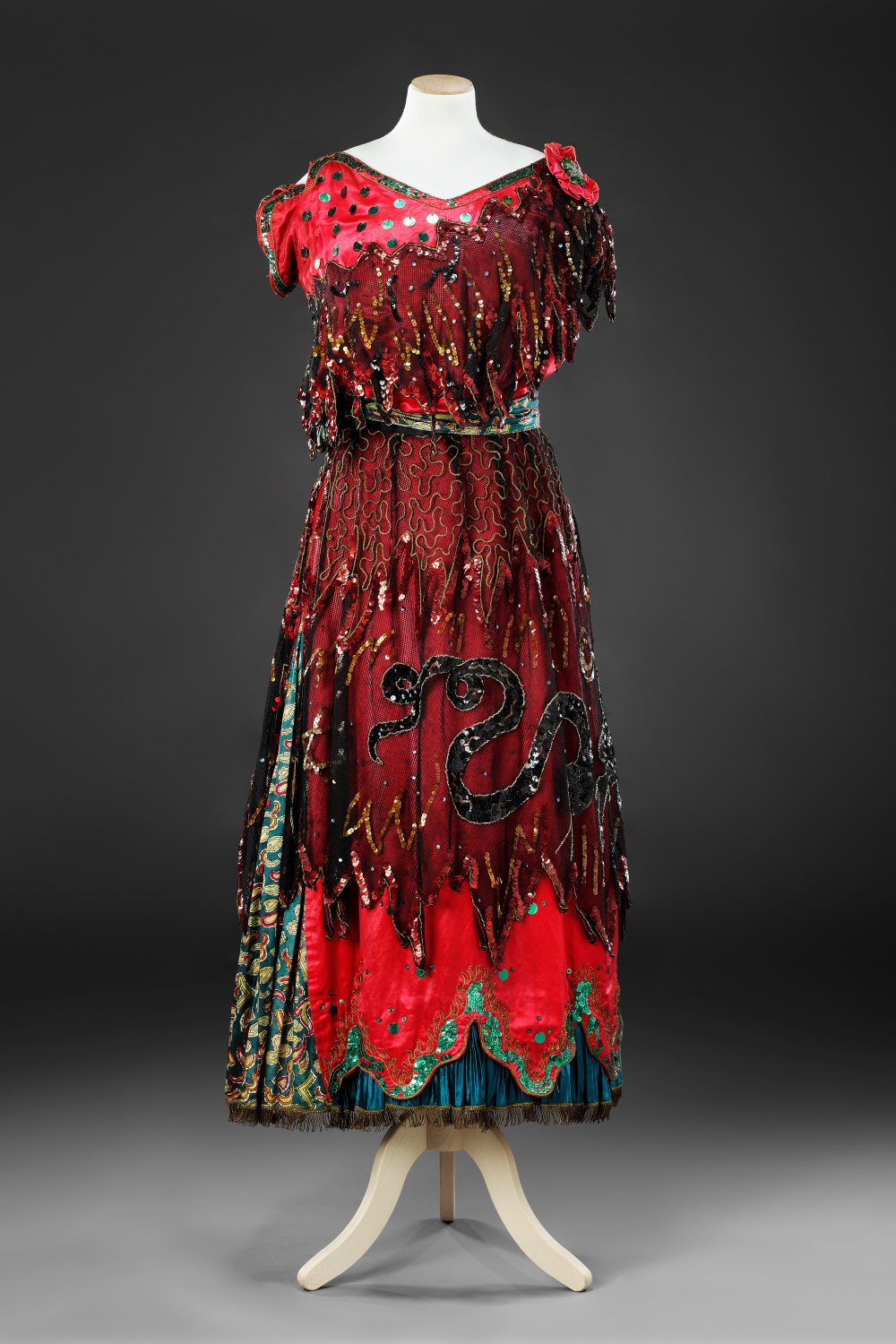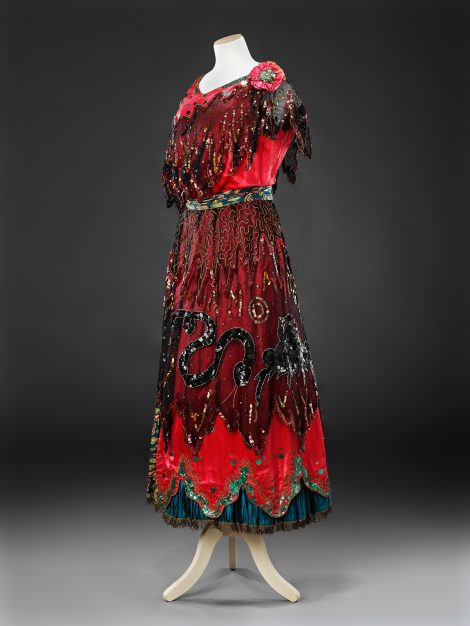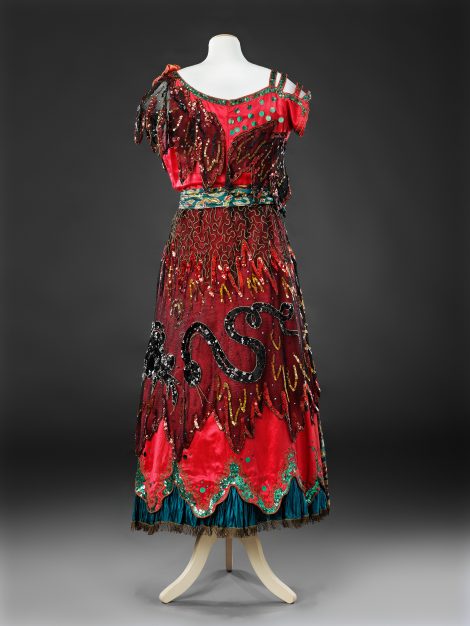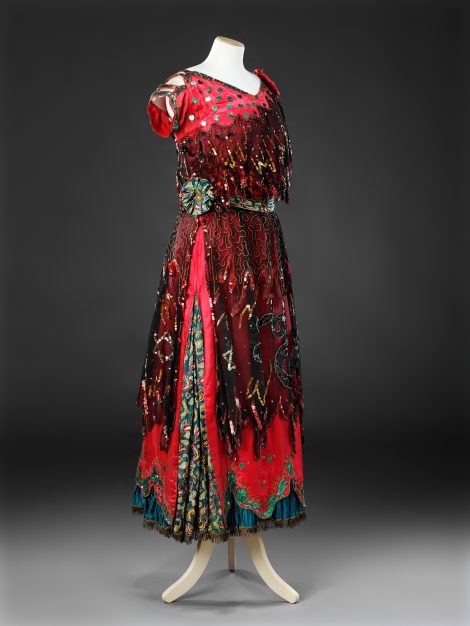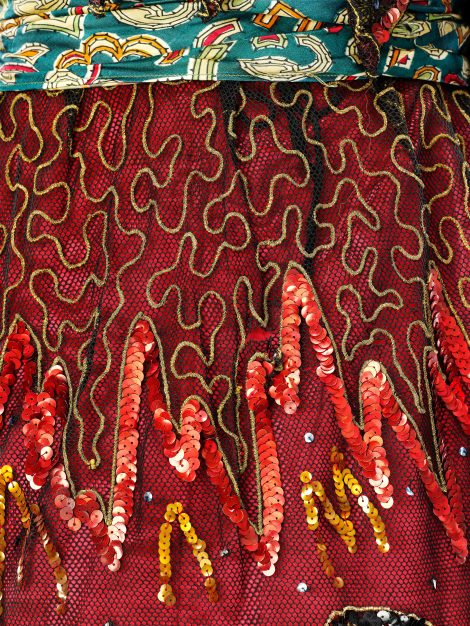The stout cotton lining and heavy fastenings of this dress point to its probable origins as a stage garment, able to withstand repeated and possibly energetic wear, and belonging to a theatrical costume house where it may also have been hired out as fancy dress. Its pouched bodice front and the shape of its sleeves date it to the very first years of the 20th Century when the hems of evening dresses still swept the floor, but theatrical or fancy dress allowed a flash of ankle below a shorter skirt. The theme or character it represents is more difficult to ascertain, but is clearly related to Fire. Its vivid red satin is overlaid with black mesh fabric and encrusted with black, red and gold sequins, paillettes and beads, and a lively corded vermicelli design. Arden Holt’s entry for Fire in his book Fancy Dress Described, or What to Wear at Fancy Dress Balls of 1896 recommends a ‘Black tulle evening dress over red silk, with tongues of flames formed of red tinsel at the hem, fringed bodice and skirt covered with red sequins.’ However, the black sequined serpents on the front and back of the skirt introduce a more sinister character to the theme, such as Fire and Brimstone – the threat of perpetual damnation after death amongst the burning rocks of Hell. The dress may represent the goddess Persephone, Greek queen of the underworld. Late 19th Century and Edwardian images of ‘Persephone’ fancy dress outfits show flame-edged crowns and dresses, decorated around the skirt with small devils rather than serpents.
Fancy Dress Costume
c. 1900-5
Silk, cotton, embroidered with sequins, paillettes, metallic cord and fringing
